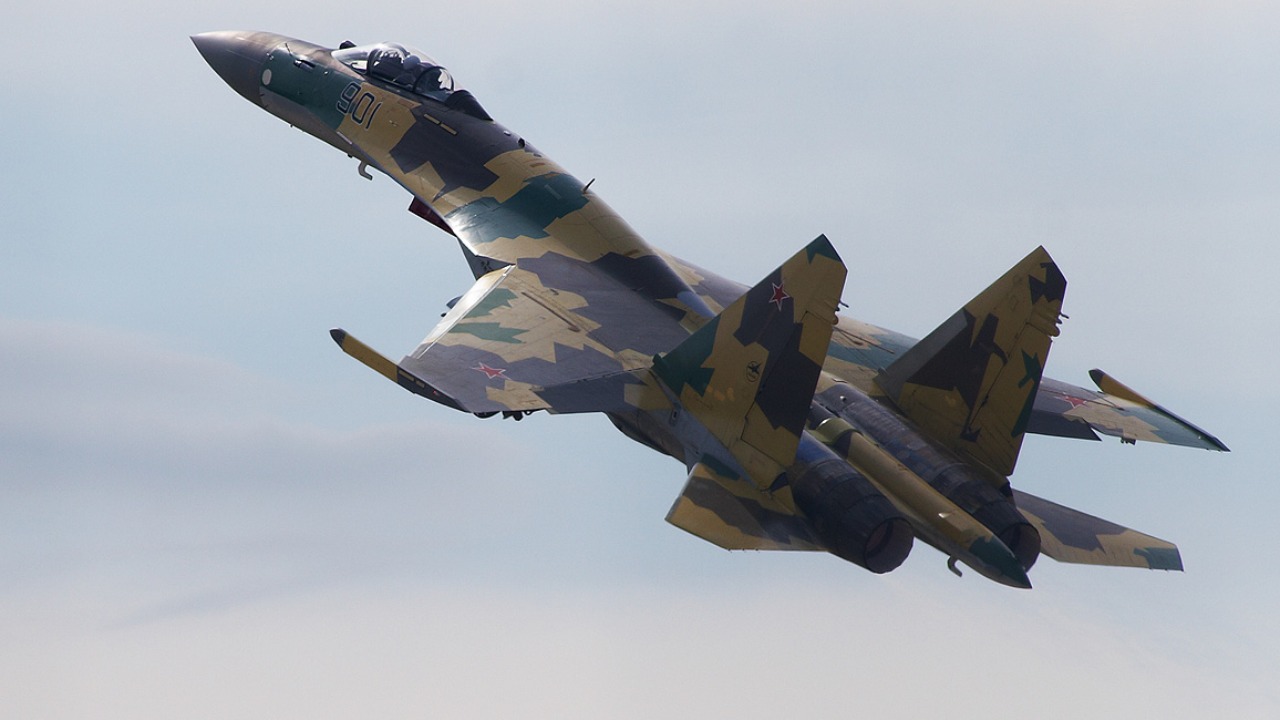
Ethiopia has finalized a significant deal to acquire Russian Su-35 fighter jets, marking a pivotal enhancement in its aerial capabilities and potentially reshaping the power dynamics across East Africa. This acquisition, reported on October 12, 2025, highlights Russia’s strategic efforts to strengthen African militaries through advanced aircraft exports. In a parallel development, Russia is also equipping the Algerian Air Force with up to 14 new Su-34 fighter-bombers, as reported on October 8, 2025, underscoring a broader pattern of Russian military support in the region.
Ethiopia’s Strategic Acquisition of Su-35S
The Ethiopian Air Force’s acquisition of the Su-35 fighter jets addresses critical gaps in its current fleet, significantly boosting its multirole combat potential. The Su-35S, known for its supermaneuverability and advanced avionics, offers Ethiopia a formidable edge in achieving air superiority. This deal, finalized on October 12, 2025, reflects Ethiopia’s strategic motivations to counter regional security threats and enhance its defense posture. The negotiation process leading to this acquisition was driven by Ethiopia’s need to modernize its air force in response to evolving regional dynamics and potential threats from neighboring states.
The Su-35S’s technical advantages, including its sophisticated radar systems and enhanced weaponry, were key factors in Ethiopia’s decision. These features enable the aircraft to perform a wide range of missions, from air-to-air combat to ground attack operations, thereby elevating Ethiopia’s military capabilities. The deal not only fills existing capability gaps but also positions Ethiopia as a more formidable force in the region, capable of deterring aggression and maintaining stability.
Impact on East African Regional Dynamics
The introduction of Su-35 jets into Ethiopia’s arsenal is poised to alter the power balance in East Africa. This acquisition could deter potential aggression from neighboring states and influence regional alliances. Ethiopia’s enhanced air power strengthens its role as a regional powerhouse, allowing it to play a more decisive role in ongoing conflicts and peacekeeping operations. The presence of advanced fighter jets like the Su-35 could shift the strategic calculations of neighboring countries, prompting them to reassess their military strategies and alliances.
As Ethiopia bolsters its military capabilities, neighboring countries may respond with their own military enhancements, potentially leading to an arms race in the region. Diplomatic shifts could also occur as countries realign their alliances in response to Ethiopia’s growing military strength. The acquisition of the Su-35s underscores Ethiopia’s commitment to maintaining regional stability and security, while also asserting its influence in East African geopolitics.
Russia’s Expanding Arms Exports to Africa
Russia’s provision of up to 14 new Su-34 fighter-bombers to the Algerian Air Force illustrates a parallel strategy to Ethiopia’s Su-35 deal. This move highlights Russia’s broader geopolitical goals in Africa, aiming to counter Western influence by strengthening military ties with African nations. The Su-34 deliveries, reported on October 8, 2025, enhance Algeria’s ground attack capabilities, providing a significant boost to its military operations.
The process and status of the Algerian Su-34 deliveries reflect Russia’s commitment to expanding its arms exports in Africa. By equipping Algeria with these advanced fighter-bombers, Russia is reinforcing its strategic partnerships and securing its influence in the region. The comparison between Russia’s Su-35 exports to Ethiopia and Su-34 support for Algeria underscores a consistent approach to bolstering African militaries, aligning with Russia’s long-term objectives in the continent.
Operational and Logistical Considerations for Ethiopia
Integrating the Su-35S into the Ethiopian Air Force presents several operational and logistical challenges. Ethiopian pilots will need extensive training to adapt to the advanced systems and capabilities of the Su-35S. Potential Russian assistance programs could play a crucial role in facilitating this transition, ensuring that Ethiopian pilots are adequately prepared to operate these sophisticated aircraft effectively.
Maintenance and basing infrastructure will also require significant upgrades to support the new Su-35 fleet. Drawing on regional precedents like Algeria’s Su-34 setup, Ethiopia will need to invest in the necessary facilities and resources to maintain the operational readiness of its Su-35s. Long-term sustainment, including the supply of spare parts from Russia, will be essential to ensure the enduring impact of this acquisition on Ethiopia’s air power.
The successful integration of the Su-35S into Ethiopia’s military framework will depend on addressing these operational and logistical considerations. By overcoming these challenges, Ethiopia can maximize the benefits of its new fighter jets, enhancing its defense capabilities and securing its position as a leading military power in East Africa.
For more details on Ethiopia’s Su-35 fighter jet deal, visit Aero News Journal. To learn about Russia’s military support for Algeria, see Zona Militar.